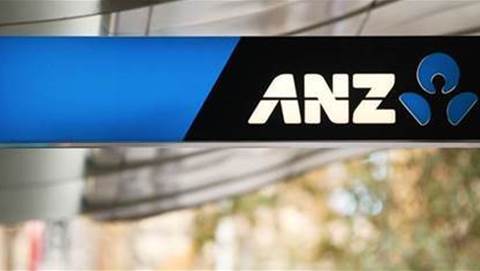After almost five years at the helm of one of the Australian Government’s most complex IT shops, Defence chief information officer Greg Farr is preparing to leave “the best gig in town”.
Farr was upbeat about the move during an interview with iTnews in his office at the Russell R1 building complex in Canberra last week, with only four months left of his tenure.
“I cannot believe I have been here for five years - it feels like about 15 minutes,” Farr said. “I have been around big IT for a while but nothing prepares you for Defence.”
“It’s big. It’s complex. It moves really quickly. You have everything from complex personnel systems through to satellites, through to deployed stuff and weapons platforms and sensors.”
Fragmented beginnings
When Farr joined Defence from the Australian Taxation Office in 2007, his Defence IT challenge was quite clear: to save $1.9 billion over ten years and $250 million a year thereafter.
Farr set about identifying weaknesses in Defence’s IT infrastructure; some of the major issues were aired in the Defence whitepaper of 2009.
Defence’s IT architecture was inconsistent, with too many proprietary standards – leading to compatibility and interconnectivity squabbles – and insufficient reuse of components.
IT infrastructure was similarly fragmented with a significant proportion of its assets either having reached end-of-life, or out of warranty, resulting in instability and driving up maintenance costs.
Meanwhile, its IT procurement – valued at almost $1 billion a year – was nobbled with too many small, inefficient contracts. It seemed to take ages to get tenders to market and Defence was notorious for having every brand of a device available throughout its organisation. Its buying power was quite poor.
Farr found the organisation and its culture riddled with stovepipe management, so it lacked transparency and missed end-to-end service deadlines.
An audit last year revealed that Farr’s division still lacked supervision over some $300 million a year or 25 percent of the department's ICT activities in 2011.
Farr said his strategy was to simplify, consolidate and standardise the way Defence went about its IT business to drive down costs.
“We have done the first wave, which is to bring some order under that and better asset utilisation,” Farr said. “You can’t have lots of servers with three percent utilisation. You can’t afford it.
“To actually get that consolidation, and get it done so we have got it in control with an architecture that people are starting to apply.”
Under a new shared services scheme, Farr sought to establish only one service provider for services such as network, email, search, geospatial display, personnel, finance and payroll.
Meanwhile, a Centralised Processing Project was underway to consolidate the Defence’s current 280 data centres to less than ten domestically and three internationally.
Despite slippages, the data centre is taking shape in Sydney. Aligned with this is the roll-out of a single desktop based on a thin client technology that can cater for all levels of security.
Secret IT business and an internal app store
Farr sought to standardise back-office features, to better manage information flows for decision making, and support next-generation applications.
By the end of 2012, he hoped to deliver a secure and robust ICT capability through which personnel could collaborate regardless of location with counterparts in the department, Government, industry and other allied or coalition partners.
“This stuff, I describe to colleagues around Defence as ‘secret IT business’”, Farr said. “Just don’t worry about it – leave it with us. It will be there, cheap and online.”
Farr was also sensitive to the growing IT literacy of many non-IT personnel – a trend that has challenged private and public sector CIOs in recent years with younger employees bringing personal, unsanctioned devices onto enterprise networks.
“Neither of my kids has an IT degree. They come from different disciplines altogether. They are incredibly IT literate because that’s how they have grown up. That’s not a threat,” he said.
“We can use that. That’s why I have been saying -- and hopefully we’ll get there, in the not too distant future -- why should we not have internal app stores and let people develop their own little apps?
“It’s a different skill we have to bring to the table.”
Read on to page two for more on Greg Farr’s vision and plans for the future.



.png&h=140&w=231&c=1&s=0)





.png&w=100&c=1&s=0)

 iTnews Benchmark Security Awards 2025
iTnews Benchmark Security Awards 2025
 Digital Leadership Day Federal
Digital Leadership Day Federal
 Government Cyber Security Showcase Federal
Government Cyber Security Showcase Federal
 Government Innovation Showcase Federal
Government Innovation Showcase Federal
 Digital NSW 2025 Showcase
Digital NSW 2025 Showcase












_(1).jpg&h=140&w=231&c=1&s=0)



